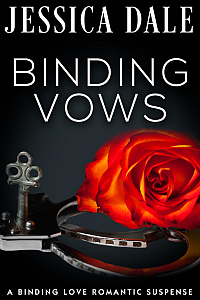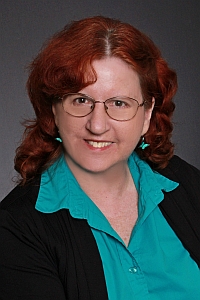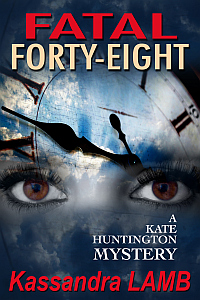Writing a Series? 7 Do’s and Don’ts — Guest: Kassandra Lamb

So far this NaNoWriMo, I haven’t gotten in many words because my life has been blowing up in increasingly ridiculous ways, from a nearly exploding cellphone to a seriously damaging house flood (no, I’m not kidding). *sigh*
Even though I haven’t been able to get words in (and I’m beginning to wonder if Novembers are simply unlucky for me), I’m still extremely grateful for my guest posters. Otherwise, all I’d have for you today is video of our carpet being stripped with the monotonous drone of 45 commercial fans as soundtrack.
Luckily, one of my wonderful guest posters is here with a great post about writing a series. If you’ve ever thought about writing a series but weren’t sure how to “evolve” the series from book to book, Kassandra Lamb shares her fantastic insights to help us.
Please welcome Kassandra Lamb! *smile*
*****
7 Do’s and Don’ts for Writing a Series (Mystery or Romance)
by Kassandra Lamb
After ten years of writing, I’m beginning to get the hang of it. *smile* I’ve completed one 10-book mystery series and am writing Book 9 of another, plus two romantic suspense series (under the pen name of Jessica Dale).
When I started out, I had no idea what I was doing. I knew how to tell a story, but I was oblivious to the many pitfalls when writing a series.
I’ve learned a thing or two since then, by trial and error mostly—I’m hardheaded that way—and I’d like to share with you all what I’ve discovered about writing a series.
Tip #1: Do Make Your Main Character Flawed, Interesting, & Likeable
You’re going to be living with this protagonist for quite some time, so give him/her some careful thought. I did not do this starting out.
When I began my first series, I thought “flawed” meant things like she’s a lousy cook (go ahead and laugh; I do every time I think about it).
I made my protagonist, Kate Huntington, way too put together. Okay, she’s a psychotherapist so we’d kind of expect her to be better put together than most, but…. I had no clue that “flawed” meant emotional wounds!
Want to write a series? Here are 7 tips and tricks by @KassandraLamb Click To TweetFortunately, her vocation was intriguing and caught readers’ interest. And since these were murder mysteries, I could make bad things happen to give poor Kate some fresh wounds to deal with.
I did manage to make her likeable. Only a few readers have complained that they didn’t like her, usually because she was “too perfect.”
With my second series, I gave my main character a failed first marriage, commitment phobia, childhood taunting, and a bit of an impulsive streak. I couldn’t do really heavy wounds, since this is a cozy mystery series.
But now, as I’m planning my next series—a police procedural—I’m contemplating some darker emotional wounds for my MC. *rubbing hands together in glee*
Tip #2: Do Push Your Main Character to Grow and Change over the Series
This is one of the most common complaints I hear about some series (not mine *smile*), that the MC never seems to learn or develop as a person. They keep doing the same things in their daily lives, and they keep going into the dark attics, ignoring law enforcement officers’ warnings, etc. Their personalities never seem to develop beyond where they started.
Also, make sure their important relationships grow and change, as in real life. One of my fave authors has an MC with a particularly passionate marriage, which makes for an interesting series subplot. But after so many books, that subplot stalled. Every story, it’s the same routine—she overworks herself on a new case; he makes her stop to sleep and eat; they make passionate love; she goes back to crime-fighting.
Rinse and repeat. Even the sex scenes got boring after a while.
Tip #3: Don’t Give Away the Outcome of Earlier Stories, but Do Drop Hints
Readers don’t always read a series in order. They may first discover your series when you’re releasing Book 4. Or they may accidentally skip a book, or get mixed up about the exact order.
How much should we talk about previous books in a series? Check out @KassandraLamb's advice Click To TweetIf you give away the conclusion of earlier books, they have no motivation to go back and read them. But if you just hint at those earlier storylines, hopefully they will be intrigued and read the entire series.
These hints should occur when a character would naturally think about an earlier experience, triggered by something in the current situation. But craft the character’s thoughts carefully, giving away just enough to make the reader curious, but not the outcome or whodunnit.
This isn’t as hard as it sounds. When people think about previous emotionally-charged events, they don’t ponder the details. They know the details because it happened to them, and they’re not usually going to dwell on the unpleasant memories:
An image flashed into my head—the snarling face of the stalker who’d almost killed me a few years ago. I shuddered and pulled my mind back to the present….
Tip #4: Do Change Up How each Storyline Evolves
Variety is the spice of life. The reader doesn’t want to hear the same story over and over, just with some characters changed out.
In my Kate Huntington series, sometimes the mystery revolves around one of her clients, but sometimes it’s a friend, coworker, or one of her P.I. husband’s clients. And I played around with different subgenre tropes—one story is more a cozy mystery, while another was a full-blown thriller, complete with a ticking clock.
With my newer series, about a young woman who trains service dogs for veterans, I’ve had her veteran clients (or sometimes neighbors or friends) wrongfully accused of a crime, stalked and threatened, and/or turn out to not be who they seemed to be. One time, the MC’s client hires her to investigate someone else (Hint: it doesn’t go well).
 Having each story evolve differently is tougher to do with romance. Many romance/romantic suspense series involve a group of people—siblings, friends, a military team, etc.—with each story revolving around one of them.
Having each story evolve differently is tougher to do with romance. Many romance/romantic suspense series involve a group of people—siblings, friends, a military team, etc.—with each story revolving around one of them.
In my romantic suspense series Binding Love, each story stars a secondary character from a previous book and involves a different type of mystery (murder, kidnapping, family secrets, etc.)
To me, a series not only needs to have some degree of continuity of characters but also a common theme. The Binding Love common theme is the types of dark evil that people can perpetrate on each other, but love ultimately gives good people the strength to overcome that evil.
Tip #5: Don’t Leave Major Things Dangling; Do Resolve each Book’s Main Story in That Book
Most readers really hate cliffhangers. You can have a few minor loose ends that hint at future stories, but the main mystery/love story needs to come to a satisfying resolution.
How can we give characters an arc over a series? @KassandraLamb shares her tips Click To TweetAnd again, readers don’t always read the stories in order. If you leave something significant dangling, and they happen to skip the next book… When they pick up the series at a later point, they are left feeling vaguely dissatisfied, maybe without even knowing why.
If you do leave something dangling, at least mention that it is still unresolved at the end, so the reader knows it’s intentional, and not something you just forgot to tie up, i.e. poor writing.
You can have a character think: We still don’t know what happened to poor James. Maybe we won’t ever know.
Or: I hadn’t decided yet how to destroy the evil talisman, but I would find a way.
(Doesn’t that last one make you want to read on, to see if the talisman wreaks more havoc in the next book?)
Tip #6: Do End the Series when Bored with the Characters and/or Can’t Think of Good Storylines
You don’t ever want to be accused of “phoning it in.” I’ve seen this happen with several famous mystery writers. After so many books in a series, the stories lose their freshness.
I get the distinct feeling that these series continue because the authors and/or their publishers don’t want to give up on a sure bet money-wise.
But readers may not just stop reading that series. I’m not as likely to read an author’s new series, if I felt the last couple I read in their old series weren’t all that great.
In other words, go out while you’re riding high, and move on to something new that excites you again.
Tip #7: But Do Complete the Protagonist’s Character Arc
After I was pretty much burned out on my Kate Huntington series, I wrote one more book. I did this for three reasons. One, my readers were bugging me for one more, and two, I came up with a great story idea.
The third reason didn’t really reveal itself until I was about halfway through writing the book. This particular storyline gave me a great opportunity to have Kate revisit some earlier wounds and come to a more complete resolution of them.
In the end, I was really glad I wrote that 10th book. It provided a better finale for the series than Book 9 had.
Now over to you all—any pitfalls or helpful hints I forgot to mention re: writing a series?
*****
 Kassandra Lamb is a retired psychotherapist/college professor turned mystery writer. She spends most of her time with her characters in an alternate universe, the magic portal to which (i.e., her computer) is located in Florida, where her husband and dog catch occasional glimpses of her.
Kassandra Lamb is a retired psychotherapist/college professor turned mystery writer. She spends most of her time with her characters in an alternate universe, the magic portal to which (i.e., her computer) is located in Florida, where her husband and dog catch occasional glimpses of her.
She is the author of the Kate Huntington mystery series, the Marcia Banks and Buddy cozy mysteries, plus a guidebook for novice writers, Someday Is Here! A Beginner’s Guide to Writing and Publishing Your First Book. She also writes romantic suspense under the pen name Jessica Dale.
Website | Twitter | Facebook | Goodreads | On Amazon | BookBub
*****
Fatal Forty-Eight, A Kate Huntington Mystery
 Celebration turns to nightmare when psychotherapist Kate Huntington’s guest of honor disappears en route to her own retirement party. Kate’s former boss, Sally Ford, has been kidnapped by a serial killer who holds his victims exactly forty-eight hours before killing them.
Celebration turns to nightmare when psychotherapist Kate Huntington’s guest of honor disappears en route to her own retirement party. Kate’s former boss, Sally Ford, has been kidnapped by a serial killer who holds his victims exactly forty-eight hours before killing them.
With time ticking away, the police allow Kate and her P.I. husband to help with the investigation. The FBI agents involved in the case have mixed reactions to the “civilian consultants.”
The senior agent welcomes Kate’s assistance as he fine-tunes his psychological profile. His voluptuous, young partner is more by the book. She locks horns out in the field with Kate’s husband, while back at headquarters, misunderstandings abound. But they can ill afford these distractions, when Sally’s time is about to expire.
Amazon | Barnes & Noble | Apple | Kobo | GooglePlay
Now on Sale for Only $0.99!
*****
Thank you, Kass! This is fantastic information about how we can make a series work for us, our characters, and our readers. I especially love your examples for how to drop hints of earlier books or subtly acknowledge loose story threads.
My newest WIP is a different type of series for me, so this is perfect advice for how to juggle story arcs and character arcs along with series arcs. I hope this post helps all of you too! *smile*
Have you written a series before (or thought about writing one)? How was it different for you from writing a standalone book? What type of series was it (genre, continuing characters or not, etc.)? For Kassandra’s question, do you have any hints or pitfalls to add to this list? Do you have any questions for Kassandra?
Pin It
Thanks so much, Jami, for inviting me over today to play in your sandbox. I love chatting with your subscribers!
So sorry that so many crazy things are interfering with your NaNo efforts. 🙁 Hope your life settles down soon.
Thank you for these insights. I especially applaud the comments about characters changing over time. A “hero’s journey” over twenty books is not expected but I do like to be able to see some changes. It is especially annoying when much of each book’s tension comes from rival suitors of the MC. After a decade or two, there should be some sort of a decision.
I hear that, Robert. You only get tension from a conflict if there is some reason to believe the conflict will actually get resolved, one way or the other. The tension dissipates if the conflict never progresses toward resolution.
I love these tips, and they arrived at just the right time! Getting WAY ahead of myself, but when you write the last book in a series–and you KNOW it’s the last book–do you launch and promote it as such?
I did, but only to my established readers. I called it that in my newsletter announcement and on my Facebook author page, but not in other promotional material.
In the book itself, I did a lot of referring back to earlier books, more so than normal, and as I mentioned, it felt like I was putting some finishing touches on the main character’s development. My editor commented that she felt the story really tied the whole series together well.
Good luck with your series!!
Great advice–thanks:)
A great post, Kass! I’ve tried (instinctively, I guess) to do a lot of these, but you’ve given me some new things to consider. I’m wrapping up my first series with a book that will be out on Kindle this week, and on print later in December. But I have two others ongoing, and a new one in mind, so I’ll be saving this information for some good tips and reminders. Thank you, Jami and Kass, for such a helpful post! And Happy Thanksgiving! 🙂
Hey Marcia, thanks for stopping by. Glad the tips sound helpful to you. BTW, I’ve got your new book on my kindle now. Congrats on its release!!
I read this post when it came out and thought it excellent. However my problem didn’t exist then 🙁
I am writing book two of of a crime series (60% written). I have been writing it while giving book one several edits and think one more should be the final one. But while the main crimes of book one and two are separate the sub plot of B 1 continues through the series and B 2 has had me going back to add, alter, or delete small sections of book one because I now know so much more about the characters. I think this can only enhance both books but a friend is urging me to do the final edit on book one before finishing book two. I know I can’t keep tweaking but once B 1 is in print it is set in stone – there can be no going back and building a fuller picture – so am reluctant to commit to a final edit while B 2 is still impacting on B 1. Am I wrong to want to finish the 1st draft of book two before the final edit of book one?
No, you are not wrong. Beyond the issue of wanting to tweak Book 1 as Book 2’s story unfolds, the closer together you can get those two books released the better. It is a definite advantage to have at least the first draft of Book 2 done before finishing and releasing Book 1. Once you’ve whetted readers appetites with Book 1, it’s good to have something else to serve up to them quickly.
Coming late to the party so to speak I wasn’t sure I’d get a response – thank you so much 🙂 Makes me feel confident I am doing the right thing. I think there was also a subconscious thing going on in that I am a slow writer and knew I would forever be trying to play ‘catch up’ if I were to – write A, edit A – write B, edit B. Rather than – write A – write B in tandem with doing several edits of A while writing B – submit A, write C, doing several edits of B while writing C etc. Once again many thanks, Kassandra, much appreciated 🙂
You’re welcome!